Ismaelfuentes shaded the Digital Emily model from the Wikihuman Project and shaded her in Cyles. The result is impressive. What do you think? Did we cross the uncanny valley here?
Ismaelfuentes writes:
Hi, this is the finished work I did from study of skin. At first, it wasn't my intention to finish it but after reading some advices I decided to improve the render.
I'm so grateful for all people that helped me in the thread "Works in progress / Skin in Cycles. Emily 2.1.



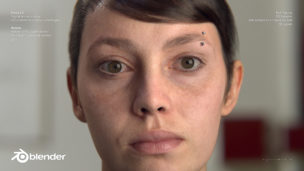
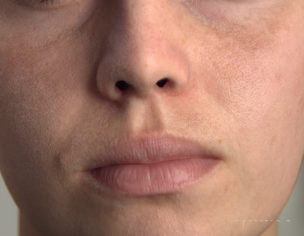
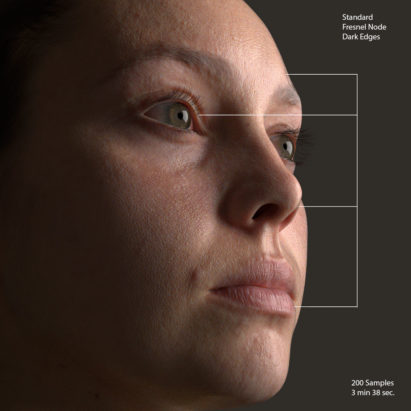

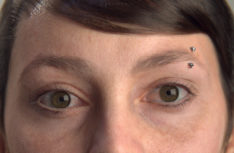

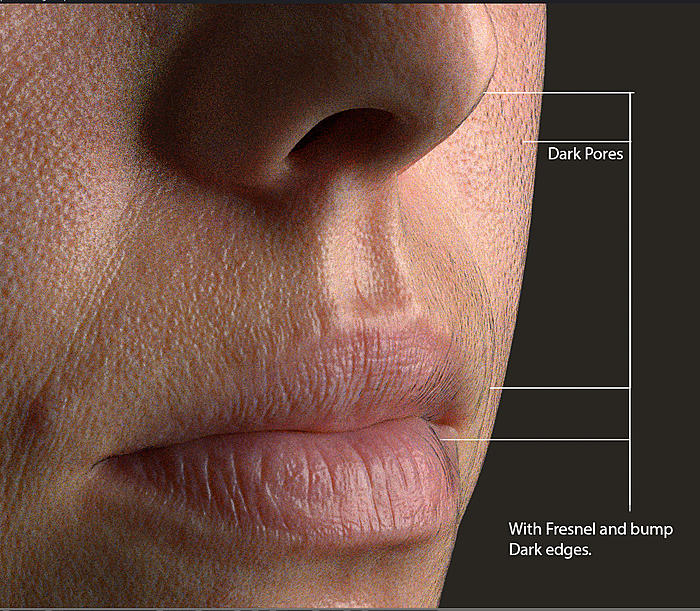


14 Comments
"Seven years after Digital Emily was created,"
Jeeze, has it really been 7 years? Not only is everything else making me feel old these days, now it's also cutting edge skin rendering...
Looks good, although something's going on with that last picture that's really close up - that noise and the hard Fresnel reflections on those extreme angles are throwing me off.
This project has now certainly traveled all the way across the uncanny valley. So far across that this is now so convincingly real that it is not at all disturbing to look at. However, the "Dark edges" in the last image makes it look like she has a thin plastic coating over her skin. There is a type of silicon grease that might look like this when applied to skin. Perhaps the index of refraction in the Fresnel settings is too high? Perhaps the intent of the Fresnel settings is to capture the optical properties of the thin layer of oil on top of the skin. Real skin is slightly oily and varies by individual and from location to location across skin and by type of skin -- skin on lips is probably a lot less oily. The image with no dark edges looked
completely convincing to me -- totally photographic of a real person.
I think those dark edges on the extreme angles in the last picture are so dark because they are reflecting the environment - which seems to be dark as well. For me it looks a bit unrealistic, too, but I guess the problem is that in reality there might be much more light spreaded around from the complete environment that it wouldn't look that dark reflected on the skin.
Undoubtedly the best skin render I have ever seen. The suzanne piercing is a cool feature! It's totally photoreal. The last close up image however is a bit confusing. Something wierd with the fresnel? Maybe lacking some samples too...
However, amazing work here. I'd love to see the cycles nodal magic behind it!
Wow, I *completely* missed that the piercing was a Suzanne :)
You call this a 'study' ? Wow! This is amazing stuff! I 'll keep an eye on you!
Wow, I'm very grateful for mentioning my work in blendernation, thank you a lot.
Finished images show Emily with hair and eyebrow piercing, the rest of renders that have text correspond to unfinished work. They were only a test.
The problem of dark fresnel areas was solved with the cynicatpro fresnel node:
https://www.youtube.com/user/CynicatPro/videos
Cheers,
Ismael
That's amazing for watching our skin in such a distance. What does dark area do?
Wow!!! so awesome! it's great to see how the bar keeps getting raised :)
Just amazing! Never saw anything like that.
Hello... I am the founder of the wikihuman project (wikihuman.org). This looks really cool. You can avoid the issues of dark edges in the reflections is you cheat by taking the reflection (filtered by fresnel) and adding it on top of the total SSS. There is a video I did where I describe how to assemble the shader. https://www.fxphd.com/blog/digital-human-league-first-free-data/
The reason you don't get these dark edges in real life is that the SSS can escape at glancing angles contributing to the lighting. In your case, you are blocking this completely with the spec.
Hi christopher.
i have checked the wikihuman project website. Did not know it before. The ressources provided there is truely remarkable. The skin maps and emily's model are fantastic. Really makes the shading work easier... Your other projects are so interesting too. I recommand everyone to go and check these.
Hi Christopher, the first thing I would like to do is to congratulate you for the magnificent work that you do.
I would also wan to thank you for your generosity, because of that artists like me can learn about your research.
Thanks for the help and the link!
Best regards.
Ismael
Hi Christopher, the first thing I would like to do is to congratulate you for the magnificent work that you do. I would also wan to thank you for your generosity, because of that artists like me can learn about your research.
Thanks for the help and the link!
Best regards.
Ismael